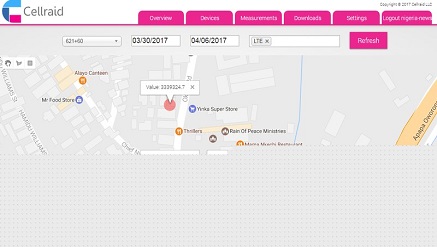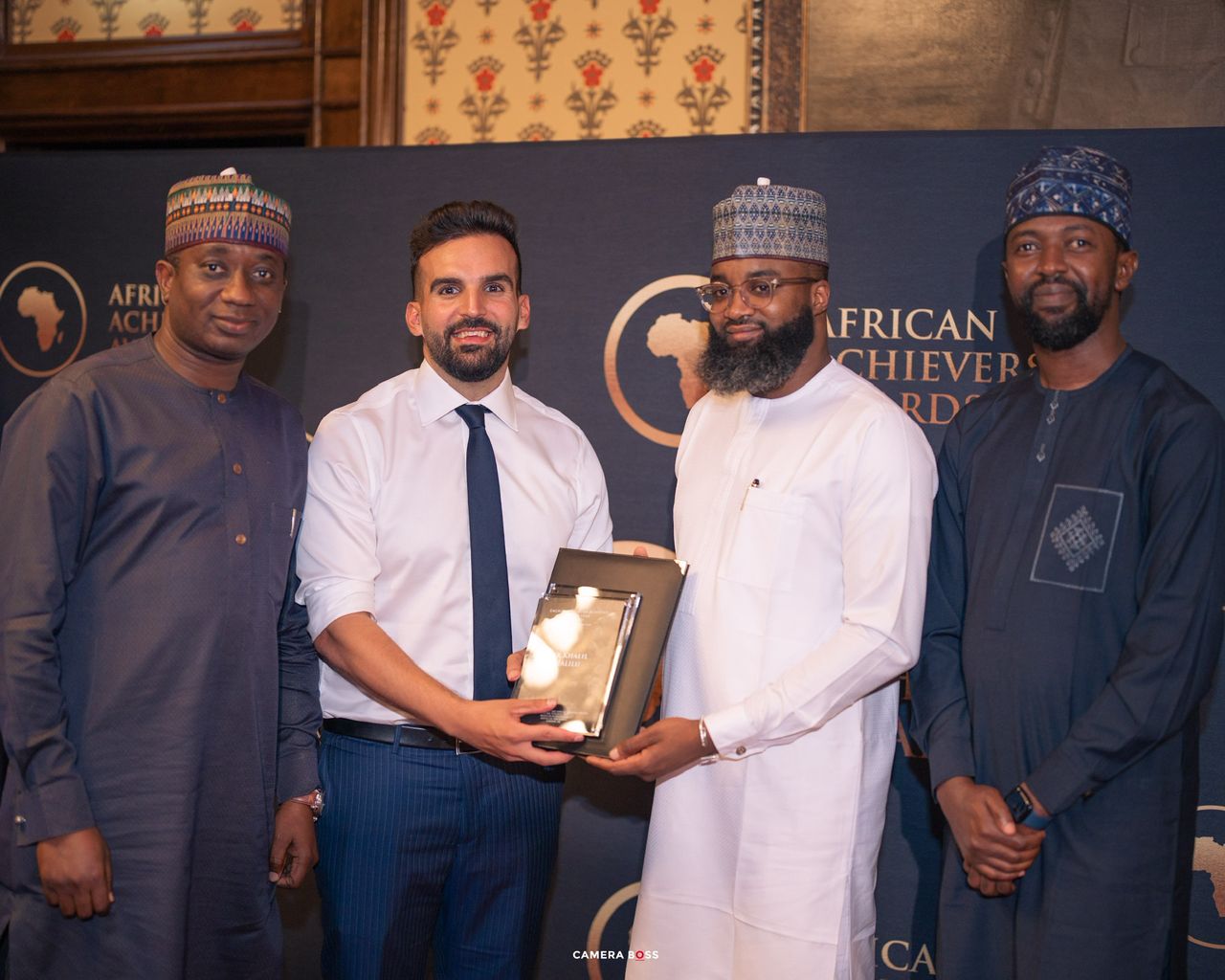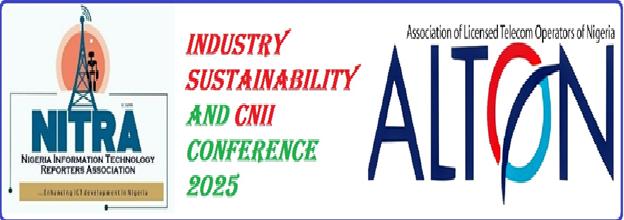Telecom
Quanta Monitor Can Now Tell Level of Radiation from Your Cellphone

Cellphone Radiation (CR) in a very hot topic multi-billion-dollar smartphone industry do not like to talk about, however, the issue is existing and now telecom regulators, operators and big public can start to use an innovation, and be aware about the level the radiation, and take some actions accordingly.
Obviously, there are growing concerns that electromagnetic radiation from one’s cellphone is absorbed by the head and body.
Exposure to such radio frequency energy has the potential to cause cancer, as indicated by the World Health Organization (WHO) since 2011.
Young, growing children, many of which are becoming addicted to social media and games have been identified as most vulnerable to the potentially damaging effects of cellphone radiation.
Thus, a Finnish startup- Cellraid, has taken up the challenge by developing unique applications to measure, monitor and also reduce exposure to cellphone radiation.
According to health experts, cell phones emit radiofrequency energy (radio waves), a form of non-ionizing radiation, from their antennas, but now, Cellraid is saying it is only small part of the radiation you should actively worry about.
Pasi Ala-Mieto, CEO Cellraid in a chat with Nigeria CommunicationsWeek, said they are quite concerned about the high level of exposure to radiation coming from cellphones hence they developed the world’s first apps for measuring mobile phone radiation.
Quanta Monitor is a free Android app that measures the SAR (Specific Absorption Rate) output, power density, and cumulative exposure to radiofrequency emissions from your phone.
Quanta Guard takes things a step further by automatically cutting off your data connection if safe SAR limits are exceeded. “We tried both apps out to see how they work and learn just how much radiation we’re exposed to on a daily basis,” he said.
Pasi Ala-Mieto states further, “Our development is good news for, not only the 5 billion cellphone users, but also telecom operators, phone manufacturers and telecom authorities, all of which have the potential to benefit from our ability to make cellphone use less risky, especially the increasing number of very young users of smartphones.”
Researches
Recently, scientists engaged in the study of biological and health effects of non-ionizing electromagnetic fields (EMF) raised fresh alarm based on their peer-reviewed, published research.
The scientists said they have serious concerns regarding the ubiquitous and increasing exposure to EMF generated by electric and wireless devices.
According to a report by guardian.ng, these include–but are not limited to–radiofrequency radiation (RFR) emitting devices, such as cellular and cordless phones and their base stations, Wi-Fi, broadcast antennas, smart meters, and baby monitors as well as electric devices and infra-structures used in the delivery of electricity that generate extremely-low frequency electromagnetic field (ELF EMF).
The scientists were joined by Professor of Radiation & Health Physics, Ladoke Akintola University of Technology, Ogbomoso, Oyo State; and Dr.Idowu Ayisat Obe, Department of Zoology, Faculty of Science, University of Lagos, Akoka, Lagos State.
Nigeria CommunicationsWeek found that the concerns over cell phones and other wireless devices prompted Toronto’s Department of Public Health to warn teenagers and young children to limit their use of cell phones.
The International Commission on Non-Ionizing Radiation Protection (ICNIRP) established in 1998 the “Guidelines For Limiting Exposure To Time-Varying Electric, Magnetic, and Electromagnetic Fields (up to 300 GHz)”. The WHO and numerous countries around the world accept these guidelines.
The WHO has also called for all nations to adopt the ICNIRP guidelines to encourage international harmonization of standards.
Nigerian Government’s Position
But, the Nigerian Communications Commission (NCC) has consistently refuted claims about telecoms equipment posing health hazards to the public. Though, the industry regulator has limited the discussions to telecom masts and towers, efforts to get the views of other industry player proved abortive as they were sceptical about commenting on the subject.
The Commission has severally relaxed the tension over the speculated health hazards that may arise as a result of erecting telecommunication masts near residential areas.
According to NCC, no research whatever had proved that Radio Frequency Exposure could enhance the possibility of contracting any disease.
They maintained that masts were not hazardous, saying that such fear was no scientific backup and urged participants at the event to pay less attention to such speculation and think more on how to move the industry forward.
How Cellphone Radiation Occurs
The CEO of Cellraid explains further “There are 5B phones causing non-necessary ‘extra radiation’ which means very fast battery consumption, which again means needs to burn coil, to charge these phones again. So far there is no institution which is really monitoring the RF exposure levels.
“Now when little kids are using their smartphones 24/7, phones in their pockets, data always on, and phone 0-10mm distance from their body hours, every day..and night…the 20 years old regulations to control SAR & power density (radiation levels) are not updated to face the real use of smartphones. Old regulation still suppose that the phone is at 15mm distance from the skull and only for voice talks, even the phone is on hand, pocket or close to body, rather than on the ear.
“We have developed Quanta Pro, that is for telecom operators and regulators to make RF Exposure measurements from the user perspective, to ensure that their operations are respecting the set limits. We are monitoring both uplink (phone), downlink (base station antennas) and additionally also wifi – just like the user is experiencing the ‘radiation’.
“In addition, we have developed solution for the consumers too; As, our technology is noting when the phone is close to body, head or hand, it can monitor the SAR level on real-time, and also limit the exposure levels, when certain thresholds are exceeded”.
How Quanta Operates
The solution, Quanta Pro, measures RF exposure level of the user in the field, streets, buildings, homes and places of work. The software runs on any Android device. It provides a low cost measurement solution for Telecom Authorities and Operators to identify high RF Exposure locations.
Quanta Pro is able to measure the combined level of radiation from the cellphone, network antennas and even Wi-Fi. At present network operators only measure radiation from network antennas (downlink). However, the main source of RF is the phone itself, which represents 99,9989% of all exposure.
“The strange thing is that telecom authorities and operators are focusing today on antennas that represent only 0,001% of the exposure”, CEO Ala-Mieto said. “I believe that soon every operator will measure the total level of RF exposure. And a real opportunity arises, when they compete to be “the healthiest choice” for their customers.
In addition, the company has developed Quanta Monitor, which is a free app for consumers, to monitor personal RF exposure levels, in real-time.“At last the user is able to know more about their own level of exposure to radio frequencies, at home and work, Quanta Monitor gives them the ability to compare networks, and keep a history of their accumulated exposure.”
Quanta Monitor and Quanta Guard are available in the Google Play Store for Android phones.
“We look forward co-operating with cellphone manufacturers like Apple and Samsung, as well as telecom operators and authorities”, said CEO Ala-Mieto respectfully and with the goal of “making all our communication life better”.
Telecom
Airtel Africa Grew Customer Base to 169m as Q1 Revenue Hits $1.4 Billion

Airtel Africa has grown its customer base by 9.0% to 169.4 million, with data customers increasing 17.4% to 75.6 million with focus on bridging the digital divide across her markets continues. According to the telecommunications operator’s financial results for the quarter ended June 30, 2025, which demonstrated strong growth across key metrics and a continued focus on expanding its services across its 14 African markets.

The operator reported a significant increase in revenue, reaching $1,415 million. This represents a 24.9% growth in constant currency and a 22.4% increase in reported currency, indicating a more stable macroeconomic environment in its operating regions and effective tariff adjustments, particularly in Nigeria.
The growth was broadly driven, with mobile services revenue increasing by 23.8% in constant currency. Data revenue showed exceptional performance, surging by 38.1%, while voice revenue grew by 13.9%. Mobile money services continued their strong upward trajectory, recording a 30.3% growth in constant currency. This was supported by accelerated growth in Francophone Africa (16.4% in constant currency) and continued strong performance in East Africa (20.3% in constant currency).
Airtel Africa’s profitability also saw a substantial uplift. EBITDA grew by 29.8% in reported currency to $679 million, with EBITDA margins expanding to 48.0% from 45.3% in the prior period. This margin expansion is attributed to sustained operating momentum, more stable fuel prices, and the ongoing benefits from cost efficiency programs.
Profit after tax saw a remarkable improvement, rising to $156 million compared to $31 million in the prior period. Basic Earnings Per Share (EPS) stood at 3.4 cents, a significant increase from 0.2 cents in the previous year, primarily reflecting higher operating profit in the current period and the absence of large derivative and foreign exchange losses that impacted the prior period.
Operational highlights further underscored the company’s growth. Airtel Africa’s total customer base expanded by 9.0% to 169.4 million. Data customers increased by 17.4% to 75.6 million, as the company intensified its efforts to bridge the digital divide. Mobile money customer base also grew by 16.1% to 45.8 million, with transaction value increasing by 28.7% in constant currency.
The company’s strategic focus on enhancing customer experience is supported by ongoing network investments. Over 2,300 new sites were rolled out, bringing the total to 37,579 sites, and the fiber network was expanded by 2,700 km, now exceeding 79,600 km. This investment has boosted data capacity across the region, with 4G population coverage reaching 74.7%, an increase of 3.4% year-on-year.
Airtel Africa continued its debt localization program, with almost 95% of its operating company debt (excluding lease liabilities) now in local currency, up from 86% a year ago, reducing foreign currency debt exposure. The company also confirmed it has returned $16.9 million to shareholders through its ongoing share buyback program as of June 30, 2025.
Sunil Taldar, chief executive officer, said: “We are very pleased with the strong growth in our operating and financial performance in the first quarter. The strength of this performance, and the scale of the growth we achieved, reflects the sustained demand for our services and the strength of our business model to meet these demands. Operationally, the acceleration in customer base growth to 9%, and 17.4% growth in our data customers to 75.6m reflects the strong on-ground execution with a relentless focus on digitisation and the simplification of the customer experience.”
Telecom
Khalil Halilu Honoured at UK Parliament for Championing African Innovation

Mr. Khalil Suleiman Halilu, executive vice chairman/ceo of the National Agency for Science and Engineering Infrastructure (NASENI), was honoured with the prestigious African Achievers Award at the 15th edition of the ceremony held at the historic House of Lords, UK Parliament, on July 11, 2025.

L-R: Founder, Startup Arewa, Mohammed Jega; Deputy Mayor of London for Environment and Energy Mete Coban; Executive Vice Chairman/CEO, National Agency for Science and Engineering Infrastructure (NASENI), Khalil Suleiman Halilu; and Special Adviser to the EVC on Commercialization, Engr. Anas Balarabe during the presentation of the prestigious African Achievers Award to Halilu at the House of Lords, UK Parliament recently.
The award, presented during an event that brought together royals, global leaders, policymakers, and innovators, recognized Mr. Halilu’s outstanding contributions to advancing Africa’s technological infrastructure, innovation ecosystems, and industrial growth through his leadership at NASENI.
Hosted by Baroness Sandip Verma, Chancellor of the University of Roehampton and a respected member of the House of Lords, the ceremony was a powerful global showcase of African excellence and transformative leadership. Mr. Halilu joined a distinguished group of honourees including public officials, business executives, and philanthropists shaping the future of the continent.
In his remarks, Mr. Halilu emphasized Africa’s readiness to lead in innovation, manufacturing, and sustainability.
“It is a great honour to receive this award alongside fellow visionaries committed to Africa’s future. At NASENI, we are bridging the gap between ambition and access, turning ideas into industries, empowering indigenous solutions, and driving forward Nigeria’s and Africa’s industrial transformation. Africa is not just rising, it is ready.”
Under his leadership, NASENI has been repositioned as Nigeria’s leading technology transfer agency, delivering on the Renewed Hope Agenda of President Bola Ahmed Tinubu by enabling local production in critical sectors such as clean energy, agriculture, transportation, and digital infrastructure.
Through strategic partnerships and an Accelerated Technology Transfer & Adaptation Strategy, NASENI is turning Nigeria into a hub for sustainable innovation and industrial self-reliance. Mr. Halilu extended appreciation to the organizers and supporters of the Awards:
“I thank the African Achievers Awards team, Baroness Sandip Verma, and all those across the continent and diaspora who continue to champion African solutions. This recognition is a motivation to do more and a reminder that the future we seek is one we must build ourselves.”
Now in its 15th year, the African Achievers Awards has become one of the most respected platforms spotlighting African leadership and excellence globally. This year’s edition included powerful messages from dignitaries such as King Misuzulu kaZwelithini, Queen Olori Atuwatse III, and Dr. Fatou Bensouda, reinforcing the urgency of building a united and future-facing African continent.
The award to Mr. Khalil Halilu reflects NASENI’s growing continental footprint and its mission to deliver homegrown technologies that respond to Africa’s real challenges, promote sustainable development, and accelerate industrialization across borders.
Telecom
NITRA-ALTON CNII & Sustainability Conference Rescheduled for August 7 in Lagos

The 2025 edition of the Critical National Information Infrastructure (CNII) & Sustainability Conference has been rescheduled to hold on August 7, 2025, at CitiHeight Hotel, Ikeja, Lagos, following a shift from its earlier date of July 30.

The adjustment was made to accommodate a nationwide telecom stakeholders’ meeting convened by the Nigerian Communications Commission (NCC).
The CNII Conference, jointly organised by the Nigeria Information Technology Reporters Association (NITRA) and Association of Licensed Telecommunications Operators of Nigeria (ALTON), seeks to address the implementation and awareness gaps surrounding the CNII Order, signed into law by the Federal Government in August 2024.
The law designates telecom infrastructure as Critical National Information Infrastructure, positioning it as a strategic asset vital to Nigeria’s economic and security framework. Industry groups including the Association of Telecommunications Companies of Nigeria (ATCON) have thrown their weight behind the initiative.
Speaking on the new date, NITRA Chairman, Mr. Chike Onwuegbuchi, emphasised that the Act, though laudable, requires industry-wide collaboration and clear implementation strategy for tangible impact.
“The mere proclamation of CNII as an Act does not guarantee infrastructure safety. Stakeholders must address operational and standardisation gaps to make the law work,” he said.
ALTON Chairman, Engr. Gbenga Adebayo, also highlighted the need for regular maintenance and technology upgrades to curb vandalism and ensure infrastructure security.
Focus Areas of the Conference Include:
- Implementation mechanisms for the CNII Act.
- Stakeholders’ roles at federal, state, and industry levels.
- Security enforcement and public education.
- Infrastructure protection and sustainability.
- Collaboration and compliance across telecom companies.
Expected attendees include the Minister of Communications, Innovation and Digital Economy, regulators, service providers, security agencies, and key players in public and private sectors.
The event is themed “Industry Sustainability And CNII Conference 2025 – Way Forward”, with panel discussions aimed at creating a unified approach to safeguarding Nigeria’s telecom infrastructure under the CNII provisions.

 E-Financial3 days ago
E-Financial3 days agoKuda Unveils New Wallet for Multiple Currencies

 Telecom3 days ago
Telecom3 days agoTelcos Resume SIM Card Sales after 2-Week Halt

 Telecom3 days ago
Telecom3 days agoNigeria, Others Achieve 84% Adult Mobile Phones Penetration

 E-Business3 days ago
E-Business3 days agoHow AI Alert by Airtel is Transforming Mobile Security in Africa

 E-Business3 days ago
E-Business3 days agoNITDA, API Partner Against Harmful Online Content

 Telecom2 days ago
Telecom2 days agoTelcos: How and Why Network Services have Been Poor

 Telecom2 days ago
Telecom2 days agoGlo Launches Nigeria’s First-of-its-kind Device Protection Plan

 News3 days ago
News3 days agoHorn of Africa Leaders Seek Enhanced Digital Integration for Increased Regional Growth















